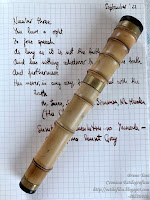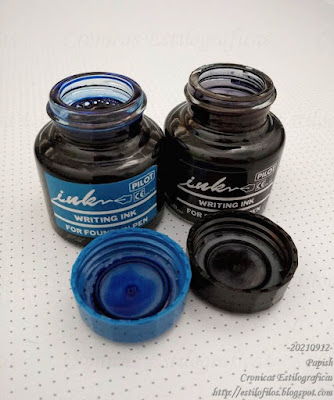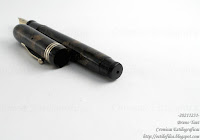It is composed of four different pens –named Gale, Daybreak, Limpid Stream, and Evergreen― decorated with the technique togidashi maki-e. The price, in Japan, is JPY 300,000, plus taxes.
Size-wise, these pens are placed between the Yukari Royale (size 20 nibs) and the Emperor (size 50). However, this togidashi maki-e decoration is a lot less ellaborated than those sported on the previous models (save for the urushi models 20 and 50), and it is signed collectivelly by the Kokkokai without the name of any particular craftsman.
Will this pen become a regular in the Namiki catalog? Only time and sales will tell. It might be worth to remember that the size 15 nib of Pilot´s is not part of the Namiki catalog; and that despite the existance of the urushi-coated model Custom 845. However, there was a very limited edition of size-15 pens with urushi-based decoration commissioned by Mitsukoshi department stores in 2004-05. They were branded as Pilot―Pilot Shun.
My thanks to Mr. AMB.
Parker 51, music nib – Waterman´s Serenity Blue
Bruno Taut
December 15th 2022
Etiquetas: Pilot, maki-e, mercado
Bruno Taut
December 15th 2022
Etiquetas: Pilot, maki-e, mercado

































































